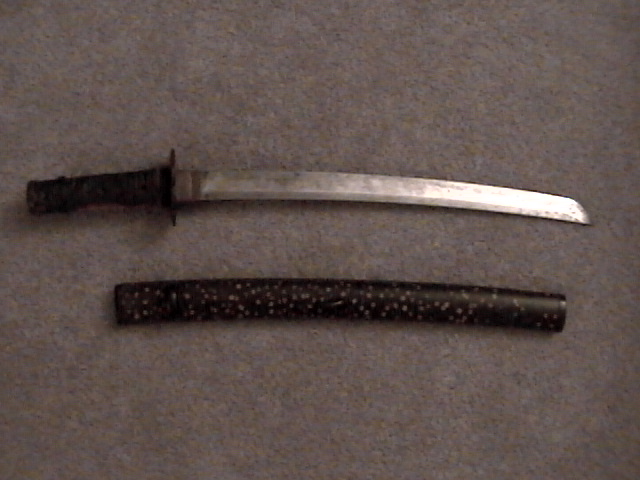Hello all!
Here are more sword weights and blade lengths, this time from the "Checklist of the Severance Collection" in
Arms and Armor: the Cleveland Museum of Art by Stephen N. Fliegel. Note that at least one sword may be lacking a grip, in which case the actual weight during its working life would have been slightly higher. Also note that all weights may be a bit less due to corrosion, depending on how well any sword is preserved. Finally, I didn't add everything from the list; I left off the smallswords, hunting swords, some rapiers, and a few two-handers. Still, I think this gives a good representative mix.
Her we go, more numbers! (The number preceeding each is the catalog number form the checklist.)
125. German Estoc early 16th century
weight: 1.60 kg (3.5 lb)
blade length: 125.3 cm (49.0 in)
126. Italian
Schiavona early 18th century
weight: 1.32 kg (2.9 lb)
blade length: 94.0 cm (36.7 in)
127.
Italian Rapier c. 1640-50
weight: 1.38 kg (3.0 lb)
blade length: 108.3 cm (42.2 in)
128. "Mortuary Sword" c. 1640-50
weight: 1.12 kg (2.5 lb)
blade length: 85.2 cm (33.2 in)
129. German Rapier c. 1620-30
weight: 1.34 kg (2.9 lb)
blade length: 89.2 cm (34.8 in)
130. Italian Schiavona 18th century
weight: 1.28 kg (2.8 lb)
blade length: 84.4 cm (32.9 in)
132. Basket-Hitled Broadsword c. 1720
weight: 1.40 kg (3.08 lb)
blade length: 85.7 cm (33.4 in)
133. German Rapier c. 1600
weight: 0.96 kg (2.1 lb)
blade length: 111 cm (43.3 in)
134. Basket-Hilted Broadsword
weight: 1.24 kg (2.7 lb)
blade length: 91.3 cm (35.6 in)
136. Italian Schiavona early 18th century
weight: 1.28 kg (2.8 lb)
blade length: 92.7 cm (36.2 in)
137. Italian Cup-Hilted Rapier c. 1610-30
weight: 1.20 kg (2.6 lb)
blade length: 100.9 cm (39.4 in)
156. German Rapier c. 1630-50
weight: 0.82 kg (1.8 lb)
blade length: 86.5 cm (33.7 in)
159. German Hand-and-a-Half Sword early 16th century
weight: 1.68 kg (3.7 lb)
blade length: 92.3 cm (36 in)
160. Spanish Two-Handed Sword late 16th century
weight: 2.24 kg (4.9 lb)
blade length: 126 cm (49.1 in)
161. German Two-Handed Sword 1574
weight: 3.34 kg (7.3 lb)
blade length: 132.1 cm (51.5 in)
162. Spanish Two-Handed Sword
weight: 2.20 kg (4.8 lb)
blade length: 126.4 cm (49.3 in)
163. Sword 15th century
weight: 1.72 kg (3.8 lb)
blade length: 87.3 cm (34 in)
170. Italian Rapier c. 1600
weight: 1.14 kg (2.5 lb)
blade length: 94 cm (36.7 in)
182. Italian Sword c. 1550
weight: 1.00 kg (2.2 lb)
blade length: 87 cm (33.9 in)
192. Sword 15th century
weight: 1.06 kg (2.3 lb)
blade length: 103.5 cm (40.4 in)
(missing grip)
195. Sword c. 1400
weight: 0.96 kg (2.1 lb)
blade length: 71.7 cm (28 in)
196. South German Hand-and-a-Half Sword c. 1500
weight: 1.34 kg (2.9 lb)
blade length: 90.2 cm (35.2 in)
198. Sword c. 1350
weight: 0.90 kg (2.01 lb)
blade length: 62.9 cm (24.5 in)
200. German Hand-and-a-Half Sword c. 1540-80
weight: 1.62 kg (3.6 lb)
blade length: 94.8 cm (37.0 in)
201. Spanish Rapier c. 1580-1610
weight: 1.48 kg (3.3 lb)
blade length: 111.1 cm (43.3 in)
Hope someone finds these figures of interest!
I think I've found most weights I'm going to in my library!
Stay safe!
